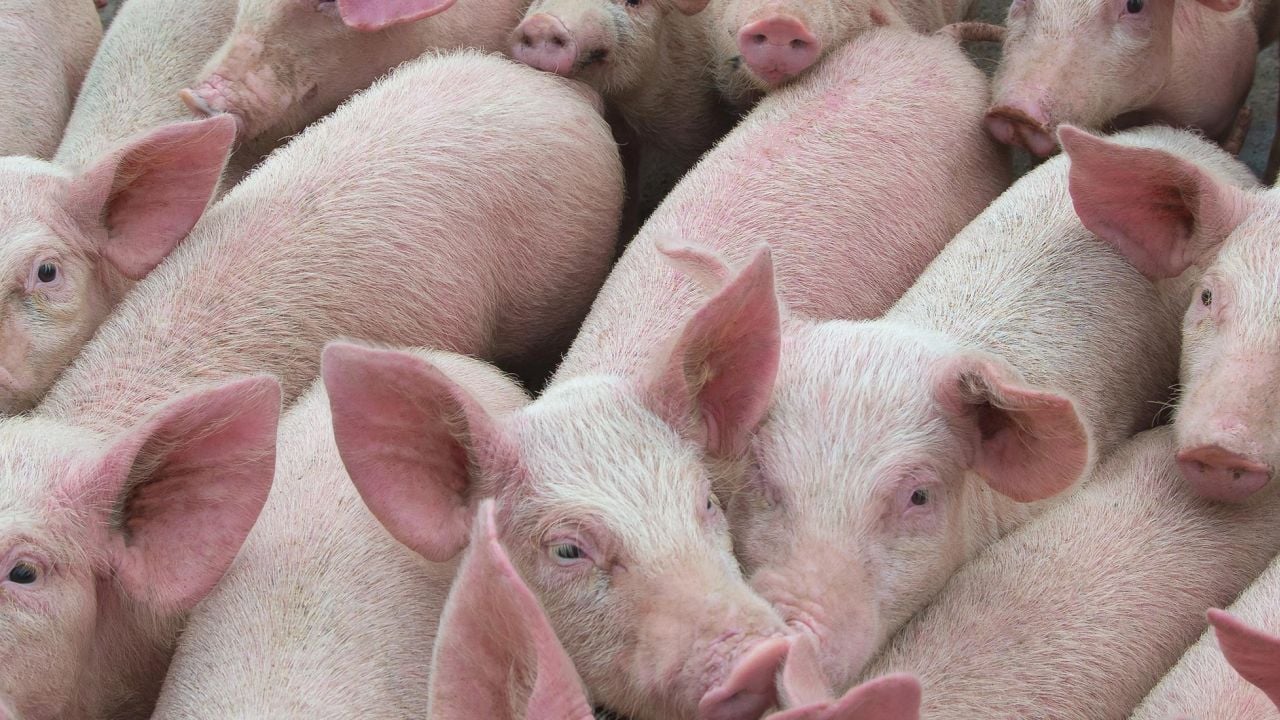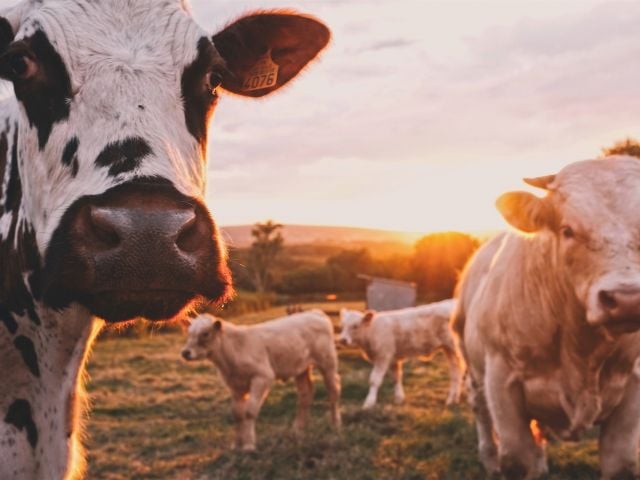
North Carolina’s dense concentration of approximately 6,500 confined animal feeding operations, often called CAFOs, annually generate two million tons of dry chicken waste and 10 billion gallons of liquified hog waste, enough to fill more than 15,000 Olympic-size swimming pools. This tsunami of bacteria-laden feces, urine and animal parts poses a serious threat to North Carolinians’ health, quality of life and property rights, but state regulators have largely looked away, kowtowing to the interests of companies like the Chinese-owned Smithfield Foods, the largest pork producer in the world.
As the state prepares to renew its regulations for swine animal feeding operations, newly revealed court documents detail a systemic and dangerous lack of oversight. In lawsuits brought by residents who live daily with the stench, filth and pathogens of nearby animal feeding operations, testimony by a top state regulator reveals:
- Absent a once-a-year inspection, complaints from citizens or self-reporting by producers of their own violations, the state has no way of knowing whether an animal feeding operation is in compliance with its operating permit.
- Far too few inspectors are attempting to oversee far too many animal feeding operations. One region with 731 swine operations has just three inspectors.
- Inspections that should take two to four hours to be done thoroughly are sometimes completed in 45 minutes or less.
- Inspectors aren’t allowed to examine the barns where the waste comes from.
These and other appalling details came to light this summer in a nuisance lawsuit by six residents of Pender County, NC, against Smithfield subsidiary Murphy-Brown LLC. It is just one of 26 lawsuits representing almost 500 residents against Murphy-Brown LLC for nuisances suffered from flies, odors and noisy trucks. To date, in three separate lawsuits, juries have awarded 18 plaintiffs $548,500,000 in damages.
A key witness at trial was Christine Lawson, program manager for the animal feeding operations program in the state’s Division of Water Resources and the Department of Environmental Quality. The release of her testimony comes at a critical time: The current state swine waste management system general permit expires next September, and the state – led by Lawson herself – is inviting public comment on the new permit until Dec. 21.
In July, Lawson was cross-examined by Michael Kaeske, one of the attorneys for the plaintiffs living near four hog facilities, which are collectively licensed to hold more than 10,000 of Smithfield’s hogs. Kaeske asked Lawson about the frequency and adequacy of inspections under the current statewide permit:
KAESKE: You’ll acknowledge for me, won’t you, that any given operation could be in violation of its permit 364 days out of the year and it’s likely that no one from your department would ever know, correct?
LAWSON: It’s possible that the facility could be in violation and it’s possible that we might not find out.
KAESKE: [B]asically, other than your inspector showing up, the [sic] Smithfield or their growers self-reporting or somebody figuring out how to make a complaint, you’re not going to know for any one of these facilities whether they’re in compliance with their permit or not, correct?
LAWSON: Those are the three main mechanisms, yes, sir.
Under further questioning, Lawson revealed why the state “might not find out.” She said the Fayetteville regional office of her program covers 11 counties, and in it are 731 hog animal feeding operations. But Lawson testified that there are only three inspectors for the region.
Lawson testified that swine facilities are supposed to be inspected at least once a year. Between July 2016 and June 2017, the Fayetteville office completed 773 inspections. To have completed these inspections – with weekends and vacations off – each inspector would have to have completed one inspection on every day of work. This excludes the time the three inspectors spent reviewing and processing paperwork for the permitted animal feeding operations, issuing 40 permits and preparing 56 notices of deficiencies and 14 notices of violations.
With that workload, it’s not surprising that although Lawson testified a thorough inspection should take two to four hours, state inspection records show them lasting 30, 40 and 45 minutes. When confronted with these records, Lawson acknowledged that 45 minutes is not enough time to conduct a thorough investigation.
KAESKE: Now, the fact of the matter is that given the number of inspections, the number of facilities to be inspected, the number of inspectors that there are to do the inspections, and given the fact that the keeping of the records is the honor system, it's tough to be thorough with these inspections, isn't it?
LAWSON: We’re as thorough as we can possibly be in what we do.
One of the most important parts of the inspection is checking whether the open-air pits, or lagoons, storing liquid animal waste are leaking. But Lawson’s testimony reveals that the law doesn’t require inspection in a manner that would detect such a hazardous leak.
KAESKE: Would you agree that if there’s a crack or a hole in the lagoon’s lining there is no way with your visual inspections to tell if there actually is a crack or if waste is leaking into the groundwater?
LAWSON: Perhaps, perhaps not. Perhaps not.
KAESKE: [Y]our stringent regulations do not require any wells to be drilled or holes to be drilled to determine whether there’s any leakage from any of these 20-something-year-old lagoons, right?
LAWSON: That’s right. State law does not require that.
Although the permits regulate swine waste, Lawson testified that her inspectors do not go into the barns to see the conditions, despite acknowledging that they are where the waste originates, creating odor that can travel to the neighbors. She explained that manure caked on the barn walls do not violate any regulations, and that the inside of the barns aren’t regulated.
KAESKE: Having barns that are that filthy, that doesn’t violate any regulations, true?
LAWSON: Our regulations don’t speak to the conditions inside the barn.
KAESKE: You know that barns create odor that can get to the neighbors, right?
LAWSON: I know that they can.
Here are hyperlinks for the inspection documents and Lawson’s testimony. They detail other problems resulting from lax regulation, from sludge buildup in waste pits to liquid manure drifting far from the farm fields it is sprayed on.
The revelations from Lawson’s testimony are hardly new. North Carolina’s failure to adequately protect its citizens and resources from the animal feeding operations industry’s animal waste spans decades.
Until 1995, when a dike collapsed and 25 million gallons of hog waste fouled the New River, North Carolina did not have a statewide animal feeding operations permit program, nor did individual operations require a permit. Since state lawmakers issued that first permit, a trifecta of devastating hurricanes has battered the coastal plain where the concentration of animal feeding operations is heaviest.
After Hurricane Floyd, in 1999, the state drafted an ambitious program for reform that went largely unmet. Floyd was followed by Hurricane Matthew, in 2016, and earlier this year by Hurricane Florence. Each storm brought the flooding of manure pits and the saturation of thousands of acres with animal waste, dispersing toxic substances through waterways and into the ocean.
Each time, Smithfield and other big producers could have adopted practices to make animal feeding operations more secure, but the state’s milquetoast regulations and lax enforcement gave them a pass.
Meanwhile, state regulators have turned a blind eye to the rapid expansion of poultry operations after the 1997 moratorium on new and expanded swine farms. As a result, thousands of poultry farms operate in the state without any oversight of their waste disposal.
A 2014 state DEQ report found that poultry farms produced 56.6 million pounds of nitrogen and 78.8 million pounds of phosphorus – three times the nitrogen and six times the phosphorus produced by swine operations. Despite these striking numbers that pose a danger to the state’s waterways and environment, North Carolina does not require any permit for the vast majority of poultry operations.
The definition of insanity is doing the same thing over and over and expecting different results. But that’s exactly what Smithfield, the rest of the pork industry and both elected and regulatory officials are doing. With the renewal of the state permit, North Carolina has a chance to restore sanity to an industry whose recklessness has gone unchecked for too long.





